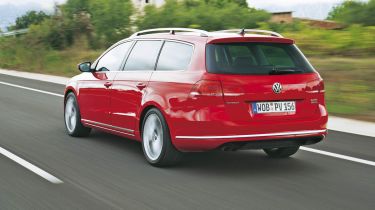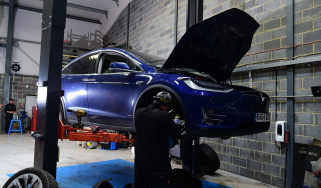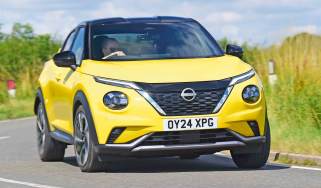VW Passat Estate
Family car has been under knife to stay competitive – and we try load carrier for size

AT first glance, the Passat is an underwhelming evolution – the styling has been sharpened, but the underpinnings and proportions are identical to its predecessor. Delve deeper, though, and it has the rock-solid build quality and all the technology you’d expect from a VW product. Our mid-range diesel engine suits the car’s understated personality well – although the BlueMotion model, emitting only 109g/km of CO2, is also worth a look.
If it ain’t broke, why fix it? That’s clearly VW’s thinking with the new Passat. At a glance, you’d be hard-pushed to tell this model apart from its predecessor, but the company has introduced an efficient new range of engines and a hike in quality, while every panel, except the roof, is fresh.
[[{"type":"media","view_mode":"content_narrow","fid":"69299","attributes":{"alt":"","class":"media-image"}}]]
A new Passat is big news, and it’s not hard to see why – it has sold 15 million units over 37 years. We tried the practical Estate model.
The styling isn’t going to set anybody’s heart racing, but that would be to miss the point of the car. Rather than being designed to win over scores of new customers, it aims to keep the existing batch happy.
At close quarters, the subtle updates give an elegant appearance – much like a mini version of the firm’s Phaeton limousine.
Used - available now

2024 Volkswagen
Passat
46,357 milesAutomaticPetrol1.5L
Cash £19,200
2022 Volkswagen
Passat
39,222 milesManualDiesel2.0L
Cash £16,403
2020 Volkswagen
Passat
53,466 milesAutomaticDiesel1.6L
Cash £13,648
2024 Volkswagen
Passat
35,553 milesAutomaticPetrol1.5L
Cash £18,406The new Passat shares its platform with the outgoing car, but from the front it’s lower and wider, while the narrow grille and angular headlights are familiar throughout the VW range.
At the back, chrome strips and LED tail-lamps match those on the Phaeton. And the similarities don’t end there. Extra sound deadening and thicker glass mean the Passat is more refined and quieter than ever, even at motorway speeds. Interior quality is now second to none, with neat touches such as the new analogue clock built into the dash.
There’s plenty of technology, too. Radar cruise control can brake the car to a standstill and accelerate away again if it detects a stationary vehicle – although it takes some nerve to leave this entirely down to the computer.
Practicality is a priority, of course, especially for the estate. There’s 513 litres of space, but pull a pair of levers in the boot to fold the seats flat, and that figure increases to 1,641 litres. Those volumes are the same as the outgoing model’s – instead, the new car’s party piece is a sensor under the rear bumper which, with a wave of the foot, opens the tailgate automatically.
We drove the 138bhp 2.0 TDI fitted with a six-speed DSG twin-clutch gearbox, and from behind the wheel it’s familiar VW fare. The engine has an excellent mix of refinement and pace, while there’s enough grip and steering feel to corner with confidence.
The DCC Adaptive Chassis Control, with its three different options – Comfort, Normal or Sport – means drivers are able to choose between long-distance comfort and body control.
Our only gripe is with the DSG gearbox, which shifts too quickly – squeeze the throttle, and it changes down several gears, sending masses of torque to the front axle. We think the slick six-speed manual is better.







